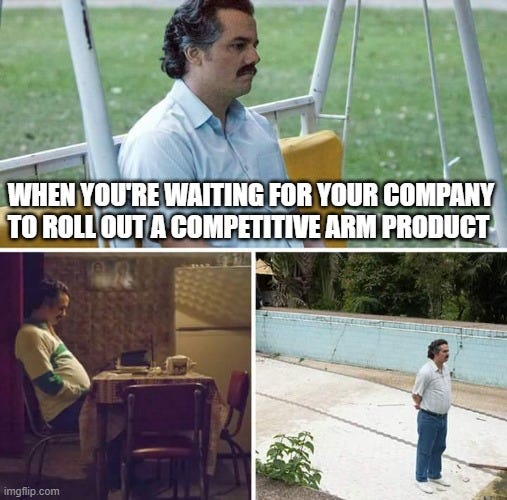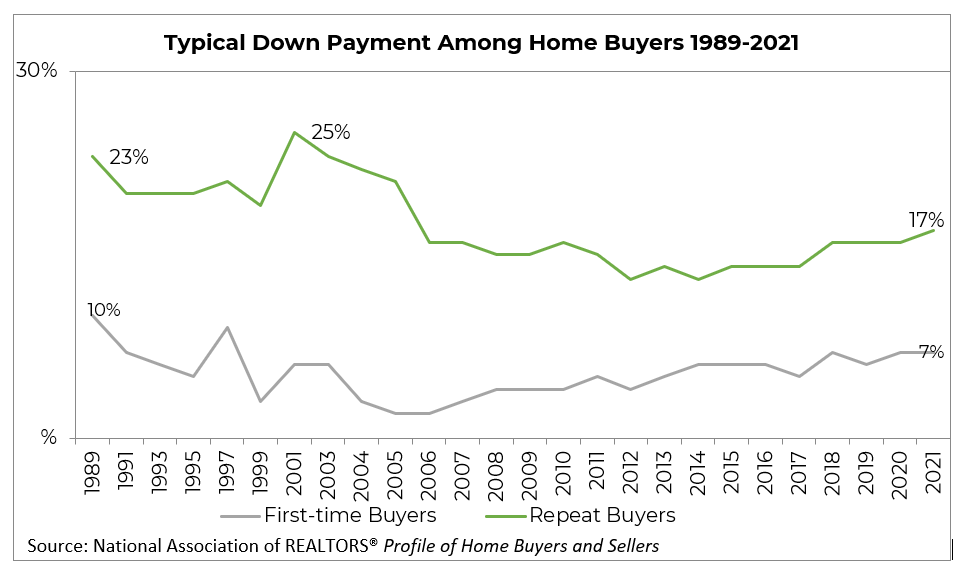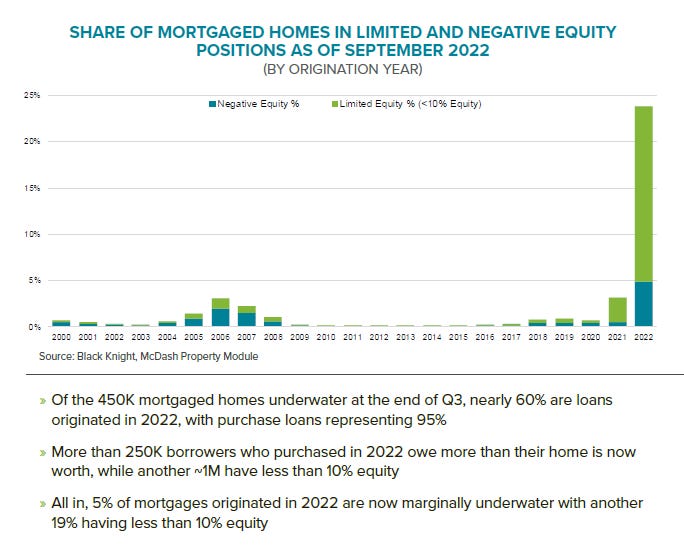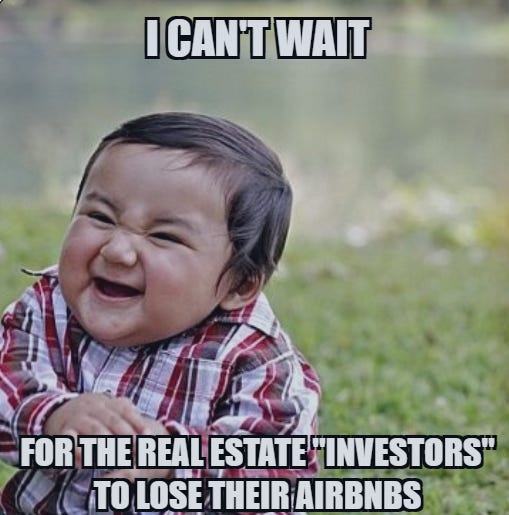Tips to Buy If You Need to Buy Now
Don't buy a house now if you can wait (your wallet will thank you)
So you need to buy now, anon?
Here are some things you can do to put yourself in the best place, despite an almost 100% likelihood that what you buy now will be worth less in the next 3-6 months.
Buy Less House Than What You Can Afford
This goes without saying, but if you buy a cheaper house than you qualify for, you have less downside in your home’s value.
If you buy a $400,000 home with 20% down, you lose $32k if prices fall another 10%.
If you buy a $300,000 home with 20% down, you only lose $24k with a 10% drop.
It will also lower your monthly payment - not just the principal and interest, but most likely also property taxes and homeowners insurance.
Limiting your downside and reducing your monthly expenses kills two birds with one stone. It allows you more flexibility to take advantage of investment opportunities as the recession continues and/or purchase a larger house when prices and/or rates lower later.
Negotiate With The Seller
Prices may continue falling, but we are already no longer in the seller’s market we have been in for the last few years. This makes it easier to negotiate as a homebuyer. There are a variety of ways this can be done (talk with a good realtor for all your options), but the ones I am most familiar with that have a big impact are negotiating on the purchase price or seller concessions.
Purchase price is straightforward; sellers will become more likely to lower it the longer their house sits on the market, etc.
Seller concessions are not as commonly thought of, but they can sometimes have a bigger impact depending on your situation. Negotiating a 5% price reduction on a $300k house is $15k. This won’t change your down payment/closing costs or monthly payment much compared to negotiating a 5% seller concession.
Let’s flesh this out…
$300k list price, negotiating a 5% price reduction ($285K purchase price), with 10% down and 6.5% rate
Down payment: $28.5k
Closing costs: $11k (4%)
Total cash: $40k
Monthly payment (P&I): $1621
$300k purchase price, 5% seller concession, with 10% down and 6.5% rate
Down payment: $30k
Closing costs: $12k (4%)
Seller concession: $15k
Total Cash: $27k
Monthly payment (P&I): $1706
Both options are viable. You can argue reducing the purchase price protects your downside more, but I believe the concession is typically a better option.
It allows you to get into the same house for a lot less cash. Yeah, yeah the monthly payment is higher, but you can buy the rate down to match the payment and still come out ahead in cash.
A seller concession also gives you greater flexibility. Once you buy the house, you are more or less at the whims of the market in terms of the house’s value, but the additional cash can be invested (hopefully at a rate of return sufficient to offset any loss).
I also mentioned a 2/1 buydown at the beginning of the post. Basically every realtor and lender is screaming at the top of their lungs that all their buyers should consider this right now, but I am not the biggest fan. I will go over the strategy anyway.
A 2/1 buydown is a form of seller concession where your interest rate is reduced for the first two years. It essentially costs about 2.5 points and lowers your interest rate by 2% for the first year and 1% for the second year. Increasing to the note rate in year three. I.e. your interest rate is 6.5% but with a 2/1 buydown it is 4.5% year one, 5.5% year two, and 6.5% year three and after.
I don’t like it because it takes away a chunk of the cash you can save from utilizing seller concessions and you can get a similar benefit using an ARM which I will discuss next, but your realtor will probably be gushing about it so best to be aware.
Use an ARM Product
Rates are high these days, and that means monthly payments are high. If you are comfortable taking on some interest rate risk in return for a lower payment, an adjustable-rate mortgage (ARM) may be for you.
Most people think of a mortgage as a fixed rate and payment for 30 years (maybe 15). While this is not entirely accurate in itself (property taxes and homeowners insurance which are usually included in your monthly payment are subject to change every year), there are many ARM products available that have a fixed rate for a specified number of years, then can adjust higher or lower depending on what index the product is tied to (used to be LIBOR and now usually SOFR).
The 5/1 ARM is one of the more common products and typically has about a 1% spread with a 30-year fixed rate. So the current 30-year fixed interest rate is currently 6.5%; the 5/1 ARM will be about 5.5%.
If you go with the 5/1 ARM, your rate will remain at 5.5% for the first five years. After that, the rate can adjust every year until it is paid off in 30 years. Now, there are caps on how much the rate can change annually and over the lifetime of the loan, so you won’t end up paying an astronomical rate like your credit card, but you do have the risk it could increase, thereby increasing your payment.
Despite the rate risk, this product is an interesting way to speculate on the rate environment and potentially save you money over the long run. If you need to buy a house now, an ARM could be a good risk-adjusted option because there is a good chance rates have already peaked. The markets are already starting to price in the Fed lowering rates in 2024, and with both the current recession and debt spiral they have engineered, in my view, they have all but guaranteed the need to lower rates within the next year or two. If that happens, you can lock in a 5/1 ARM now at 5.5%, and refinance into a 30-year fixed mortgage in 1-3 years when those rates are maybe back under 5%, saving a bunch of interest in the meantime.
Check with your lender that they even offer a competitive product because many independent mortgage banks do not currently have one (like mine). You may need to go to a big bank *gag* or a credit union.
Put A Larger Percentage Down
Did you know most people don’t actually put 20% down? It is a common misconception that this is a requirement for mortgages. The National Association of Realtors tracks the average down payment, and it is much less, especially for first-time buyers.
While a lower down payment certainly makes homeownership attainable for more people, leveraging up your home limits your flexibility if things go sideways (you lose your job or house prices fall further than expected). Maxing out your debt at or near a peak in the market is also a great way to lose big.
If you only put 5% down, it doesn’t take much to be underwater if prices fall. With 10% or 20% down, you give yourself much more leeway. We are already seeing this play out.
A larger downpayment also provides a higher likelihood that you can refinance quicker once rates start falling. There are some loan products where you can refinance the rate lower without equity, but it is FAR easier and typically cheaper to refi when you already have equity.
It also goes hand in hand with the first option - buying less house to begin with. Going back to those examples, you may be able to qualify for a $400k house, but you only have $60k for a down payment (15%). Buying the $300k house allows you to put 20% down for the same $60k.
Forced Appreciation
This is my favorite one as I have renovated some properties in the past, and have been waiting patiently for a downturn to do it again.
Forcing appreciation by improving a property is a viable option because even if the housing market continues lower, you have generated some additional equity through your improvements to offset this.
There are a number of ways you can do this. You may think of a house flipper who uses a hard money loan to buy a dilapidated property, fix it up, and sell it.
But did you know there are loan products where you can do this for a primary residence? Renovation loans are deserving of their own post, but the gist is that you can get a standard mortgage and roll the cost of the renovation into the mortgage. This can be much cheaper than what a flipper needs to pay because you have a lower down payment requirement and won’t be paying the 15%+ interest that is now common on a hard money loan.
DYOR because making a property super high-end won’t magically make your home worth double the surrounding neighborhood or anything, especially if you try this somewhere like Baltimore or Chicago. But doing things like adding bedrooms or bathrooms can typically add more value than they cost. Talk to a good realtor who can help you determine what types of projects will be viable depending on where you are looking to buy. And find a good lender who knows about renovation loans and has done them for borrowers!
Wrapping It Up
While you might not be able to hold off on purchasing a house until prices fall further, giving yourself the most possible options in times of uncertainty should be a focus.
You can use any of these strategies on their own or try them all together to really get creative (although it will be tough to find a renovation loan ARM product…).
Good luck out there.






